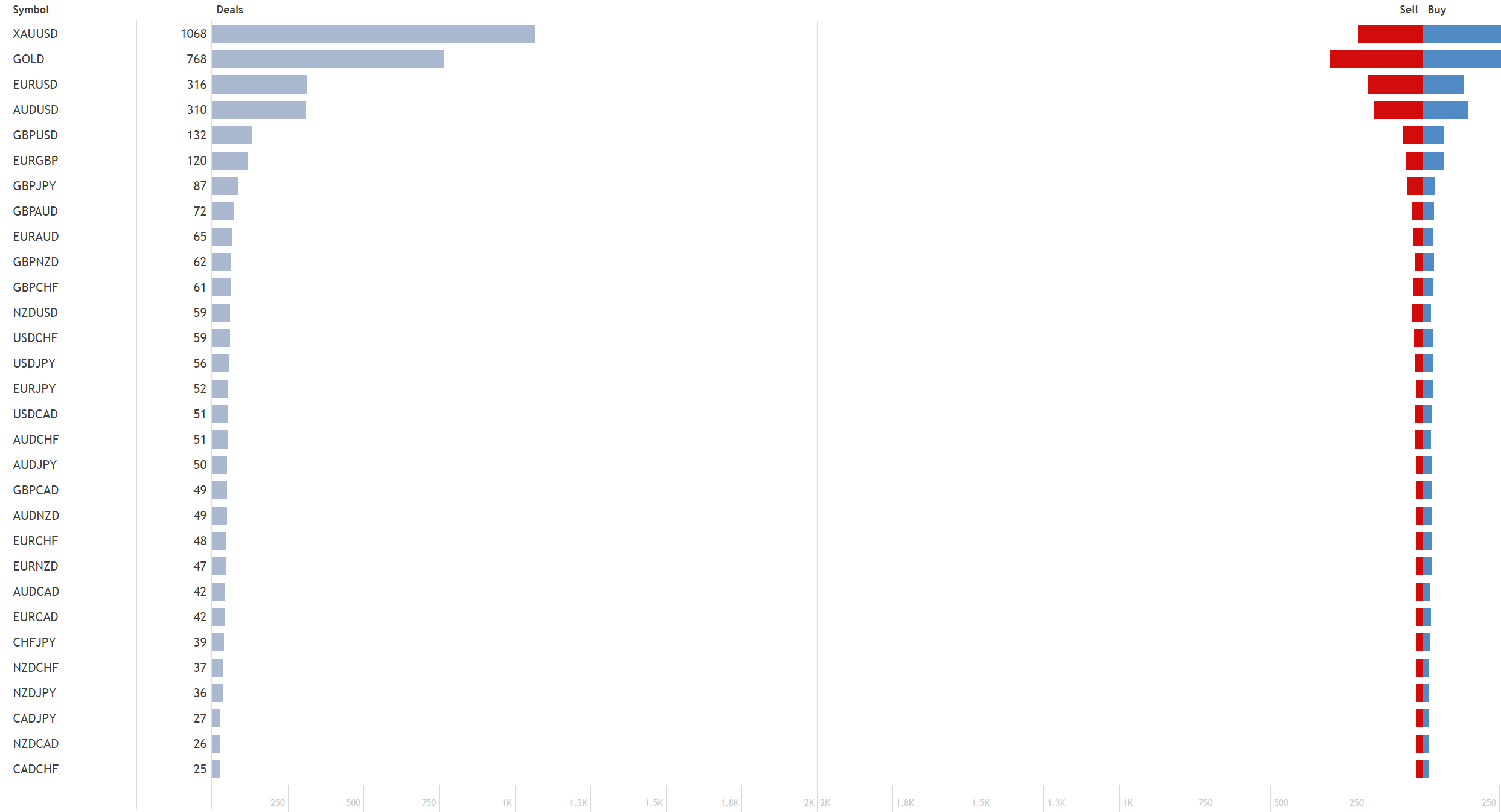Piyush Lalsingh Ratnu / Profilo
- Informazioni
|
1 anno
esperienza
|
0
prodotti
|
0
versioni demo
|
|
0
lavori
|
0
segnali
|
0
iscritti
|
Piyush Ratnu is an independent forex market analyst & trader with core expertise in XAUUSD/Spot Gold.
With more than 15 years of experience as a Financial Market Analyst, Piyush Ratnu held the responsibility of developing and refining a series of algorithms & analytic tools to simplify the trading processes. His tools and algorithms were defined and rated as “unlike tools seen in the market before, extensively designed and most importantly, functional and logical” by some of the top financial companies and analysts at New York, London and Dubai.
Piyush Ratnu holds an experience of 290,000 trades, 1,790,000 pips calculated with a remarkable trading execution rate of 2 trades per second in an ideal scenario with profit booking in less than 8 seconds tracing 60+ pips/trade, as per audited and verified track record of last 10 years.
Core strength:
Economics, Economic Data Analysis, Spot Gold (XAUUSD), USD Majors, SR MTF Range Trading, Chart Patterns,
Volume Trading, Day Trading & Position Trading
Trading style
Fundamental based Intra-day trading.
Analysis based on proprietary algorithm + 90+ parameters.
Core focus: US Futures and XAUUSD | Spot Gold
Motto
Plan your trade, and then trade your plan!
Detailed research: https://www.reddit.com/r/prgoldanalysis
Track Record since 2021: https://bit.ly/PRxauusdAnalysis
MyFxBook:
X.com: https://x.com/piyushratnu
Insta: https://www.instagram.com/piyushratnuofficial
Connect for more details:
Telegram: https://www.T.me/PiyushRatnuOfficial
Risk Disclaimer:
Trading in foreign exchange (“Forex”) on margins entails high risk and is not suitable for all investors. Past performance is not an indication of future results. In this case, as well, the high degree of leverage can act both against you and for you. Trading foreign exchange, indices and commodities, on margin, carries a high level of risk and may not be suitable for all individuals.
The information made available by Piyush Ratnu is for your general information only and is not intended to address your particular requirements. In particular, the information does not constitute any form of advice or recommendation and is not intended to be relied upon by users in making, or refraining from making, any investment decisions.
Piyush Ratnu does not in any way guarantee that this information is free from mistakes, errors, or material misstatements. It also does not guarantee that this information is of a timely nature. Investing in Open Markets involves a great deal of risk, including the loss of all or a portion of your investment, as well as emotional distress. All risks, losses and costs associated with investing, including total loss of principal, are your responsibility. The views and opinions expressed in this article are those of the authors and do not necessarily reflect the official policy or position(s) of Piyush Ratnu.
With more than 15 years of experience as a Financial Market Analyst, Piyush Ratnu held the responsibility of developing and refining a series of algorithms & analytic tools to simplify the trading processes. His tools and algorithms were defined and rated as “unlike tools seen in the market before, extensively designed and most importantly, functional and logical” by some of the top financial companies and analysts at New York, London and Dubai.
Piyush Ratnu holds an experience of 290,000 trades, 1,790,000 pips calculated with a remarkable trading execution rate of 2 trades per second in an ideal scenario with profit booking in less than 8 seconds tracing 60+ pips/trade, as per audited and verified track record of last 10 years.
Core strength:
Economics, Economic Data Analysis, Spot Gold (XAUUSD), USD Majors, SR MTF Range Trading, Chart Patterns,
Volume Trading, Day Trading & Position Trading
Trading style
Fundamental based Intra-day trading.
Analysis based on proprietary algorithm + 90+ parameters.
Core focus: US Futures and XAUUSD | Spot Gold
Motto
Plan your trade, and then trade your plan!
Detailed research: https://www.reddit.com/r/prgoldanalysis
Track Record since 2021: https://bit.ly/PRxauusdAnalysis
MyFxBook:
X.com: https://x.com/piyushratnu
Insta: https://www.instagram.com/piyushratnuofficial
Connect for more details:
Telegram: https://www.T.me/PiyushRatnuOfficial
Risk Disclaimer:
Trading in foreign exchange (“Forex”) on margins entails high risk and is not suitable for all investors. Past performance is not an indication of future results. In this case, as well, the high degree of leverage can act both against you and for you. Trading foreign exchange, indices and commodities, on margin, carries a high level of risk and may not be suitable for all individuals.
The information made available by Piyush Ratnu is for your general information only and is not intended to address your particular requirements. In particular, the information does not constitute any form of advice or recommendation and is not intended to be relied upon by users in making, or refraining from making, any investment decisions.
Piyush Ratnu does not in any way guarantee that this information is free from mistakes, errors, or material misstatements. It also does not guarantee that this information is of a timely nature. Investing in Open Markets involves a great deal of risk, including the loss of all or a portion of your investment, as well as emotional distress. All risks, losses and costs associated with investing, including total loss of principal, are your responsibility. The views and opinions expressed in this article are those of the authors and do not necessarily reflect the official policy or position(s) of Piyush Ratnu.
Amici
19
Richieste
In uscita
Piyush Lalsingh Ratnu
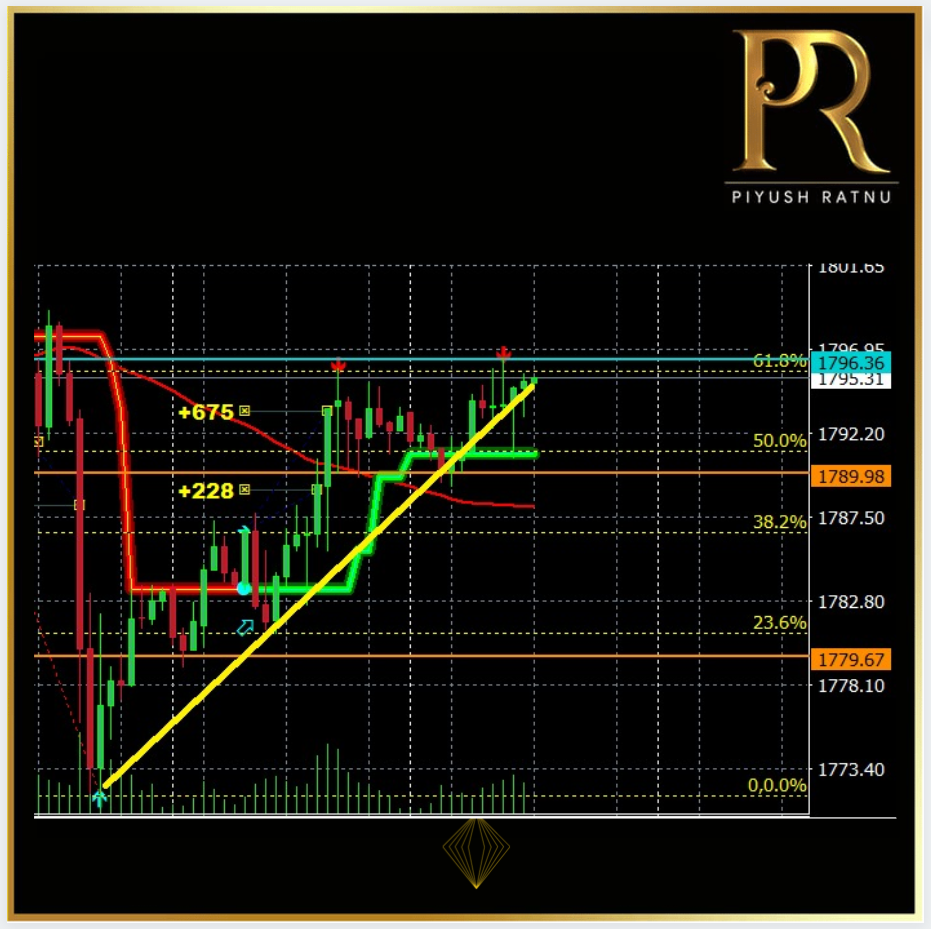
02.11.2021
GOLD back to 1796 R zone. after struggling at 1777 S zone.
Subscribe to our LIVE analysis, trading feed and trading tools for better accuracy.
Email at info@piyushratnu.com for more details.
GOLD back to 1796 R zone. after struggling at 1777 S zone.
Subscribe to our LIVE analysis, trading feed and trading tools for better accuracy.
Email at info@piyushratnu.com for more details.

Piyush Lalsingh Ratnu
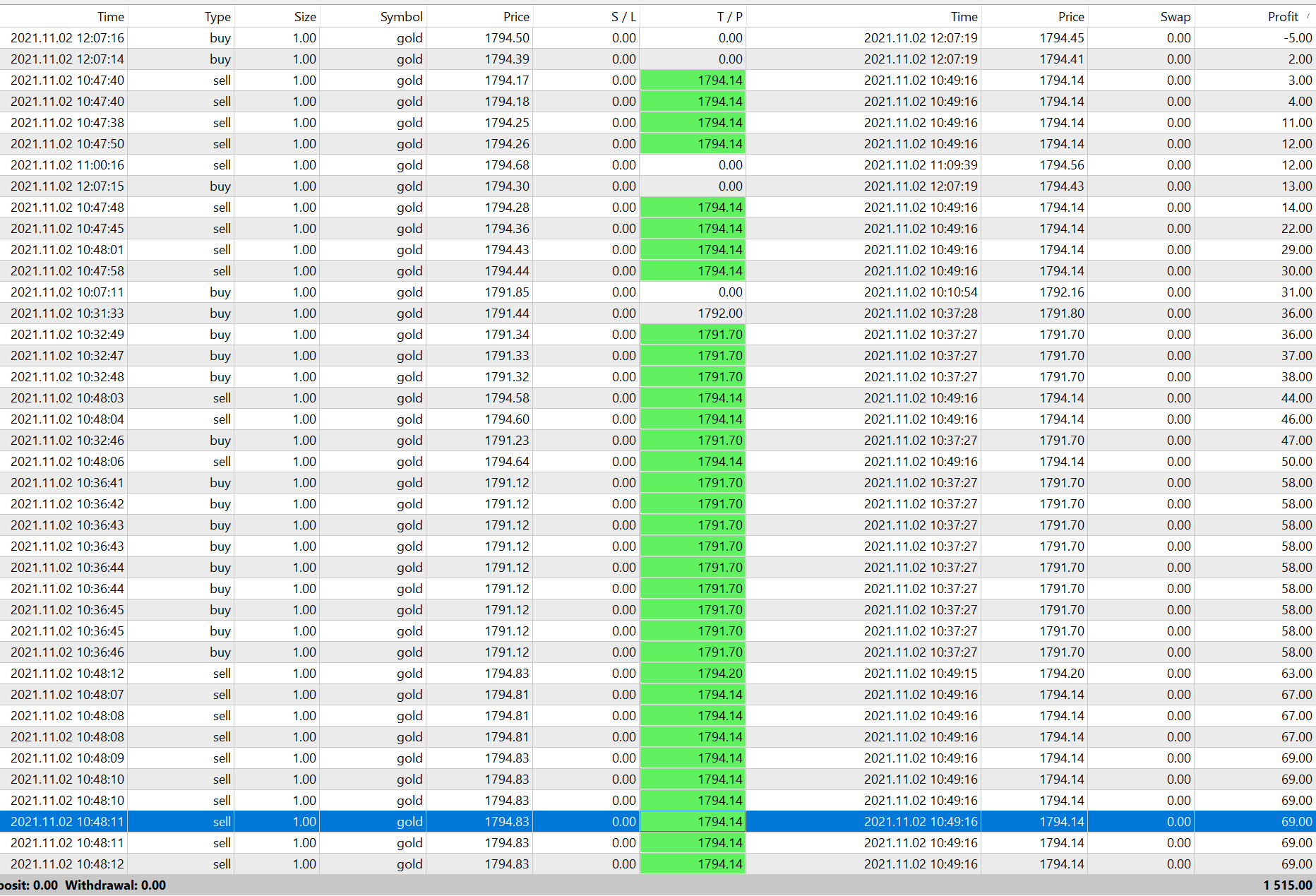
HIGH Frequency Trading | 1.0 lot each | Speed: 2 trades per second | Trading Accuracy: 90%
#PiyushRatnu | XAUUSD | GOLD | Analysis | Dubai | Email for live feed at info@piyushratnu.com
#PiyushRatnu | XAUUSD | GOLD | Analysis | Dubai | Email for live feed at info@piyushratnu.com

Piyush Lalsingh Ratnu

Trading accuracy: 90% achieved | 11.40 AM
GOLD EURUSD EURCAD
#PiyushRatnu #Forex #Bullion #Gold #Analysis
GOLD EURUSD EURCAD
#PiyushRatnu #Forex #Bullion #Gold #Analysis

Piyush Lalsingh Ratnu
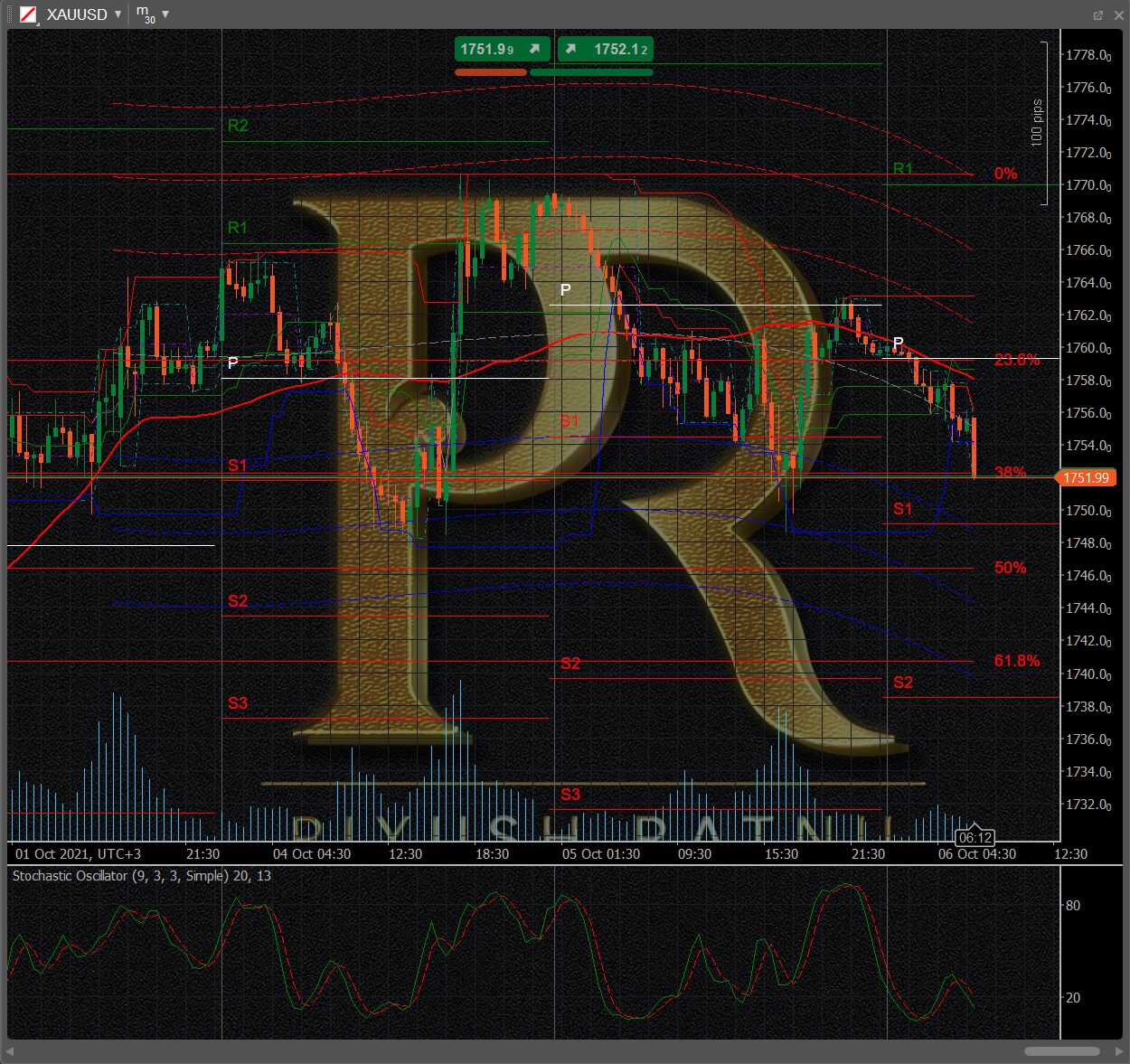
I will be waiting for GOLD price to crash the support LEVELS, I see a good BUYING opportunity after the crash, ADP, Initial Jobless Claims and NFP data will add high volatility, and a sudden crash of $25/50/75 is what I am expecting, with 23.6/38.2 recovery by Tuesday. However I never believe in holding my trades on Friday late eve, hence I will exit in Net Average Profit Price (NAP) as per the lows achieved by GOLD after this data release. If GOLD prices rise, against my expectation I will wait for the Resistance Levels: 1777/1796/1808-1818 before taking major SELL entries. As they say, no one is perfect, market can go against our analysis, however a real trader is the one who is ready for the worst while saving principle amount, always.

Piyush Lalsingh Ratnu
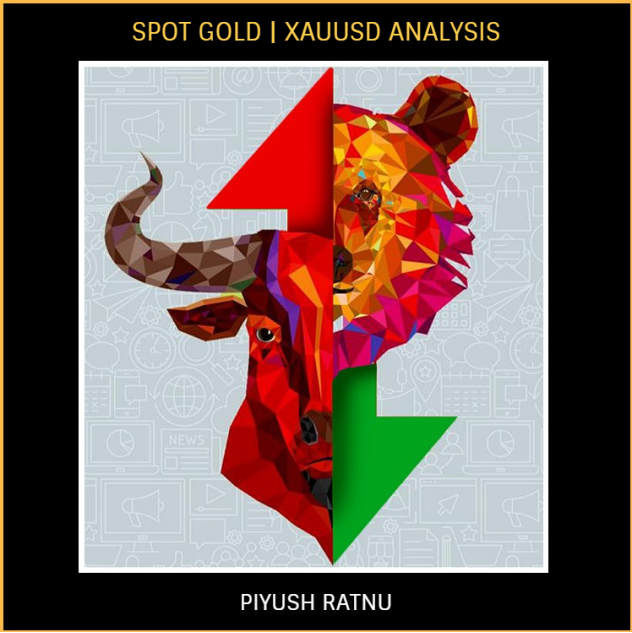
Gold and silver prices are down in midday U.S. trading Tuesday, amid solid rebounds in the U.S. stock indexes after they saw selling pressure Monday. A firmer U.S. dollar index and rising U.S. Treasury yields today are also negatives for the metals markets. December gold futures were last down $8.60 at $1,759.00. December Comex silver was last down $0.059 at $22.585 an ounce.
Despite today's gains in the U.S. stock indexes, there are still some risk-off attitudes in the marketplace. Another Chinese property firm, Fantasia Group Holdings, missed a debt payment this week. Fantasia is not as big as the troubled Evergrande property firm, but there are growing concerns about a contagion effect in the financial markets. There are lingering worries about supply-chain bottlenecks that have many businesses unable to obtain their products in a timely fashion. That matter and rapidly rising energy prices have helped to stoke price inflation fears and even notions of a return of "stagflation" that gripped world economies in the early 1980s. These elements are likely to at least limit the downside in safe-haven gold and silver in the near term.
The key outside markets today see the U.S. dollar index modestly up and not far below last week's 12-month high. Nymex crude oil futures are up and hit a nearly seven-year high of $79.48 a barrel today. Meantime, the 10-year U.S. Treasury note yield is presently fetching 1.524%.
Technically, December gold futures bears have the overall near-term technical advantage. A four-week-old price downtrend is in place on the daily bar chart. Bulls' next upside price objective is to produce a close above solid resistance at $1,800.00. Bears' next near-term downside price objective is pushing futures prices below solid technical support at $1,700.00. First resistance is seen at this week's high of $1,771.50 and then at $1,775.00. First support is seen at this week's low of $1,747.70 and then at $1,737.50.
Despite today's gains in the U.S. stock indexes, there are still some risk-off attitudes in the marketplace. Another Chinese property firm, Fantasia Group Holdings, missed a debt payment this week. Fantasia is not as big as the troubled Evergrande property firm, but there are growing concerns about a contagion effect in the financial markets. There are lingering worries about supply-chain bottlenecks that have many businesses unable to obtain their products in a timely fashion. That matter and rapidly rising energy prices have helped to stoke price inflation fears and even notions of a return of "stagflation" that gripped world economies in the early 1980s. These elements are likely to at least limit the downside in safe-haven gold and silver in the near term.
The key outside markets today see the U.S. dollar index modestly up and not far below last week's 12-month high. Nymex crude oil futures are up and hit a nearly seven-year high of $79.48 a barrel today. Meantime, the 10-year U.S. Treasury note yield is presently fetching 1.524%.
Technically, December gold futures bears have the overall near-term technical advantage. A four-week-old price downtrend is in place on the daily bar chart. Bulls' next upside price objective is to produce a close above solid resistance at $1,800.00. Bears' next near-term downside price objective is pushing futures prices below solid technical support at $1,700.00. First resistance is seen at this week's high of $1,771.50 and then at $1,775.00. First support is seen at this week's low of $1,747.70 and then at $1,737.50.

Piyush Lalsingh Ratnu
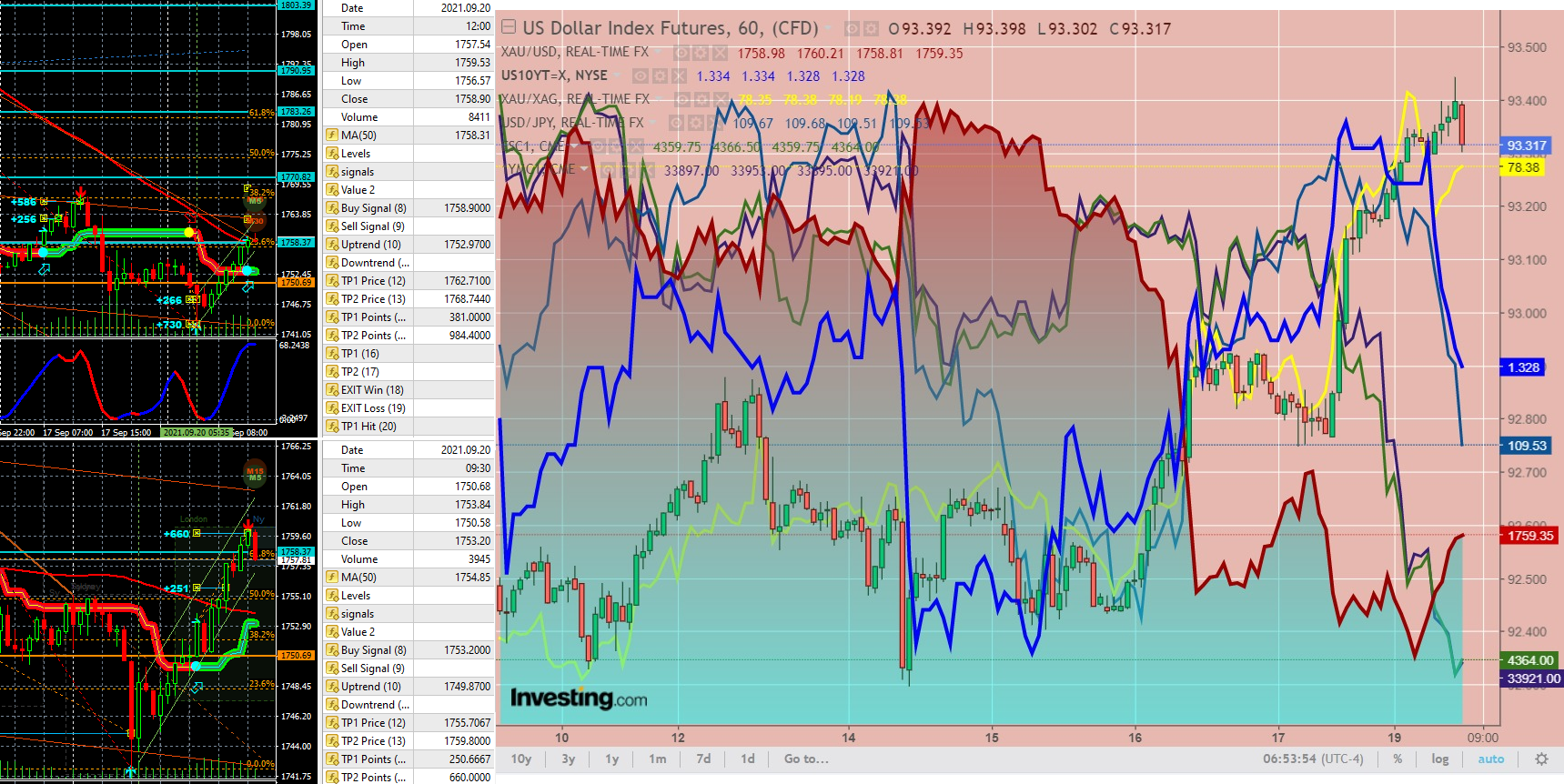
Stocks set to open lower, streamers vs legacy channels in focus after Emmys
U.S. stocks are set to open sharply lower later, as Chinese and central bank risks prompt investors to take money off the table after a strong year-to-date.
By 6:15 AM ET (1015 GMT), Dow Jones futures were down 547 points, or 1.6%, while S&P 500 futures were down 1.4% and Nasdaq 100 futures were down 1.0%.
Additional risks lurking include the suspension of federal government agencies due to the ongoing dispute over the debt ceiling, although analysts note that this argument remains – as usual – largely in the realm of political theater.
Stocks likely to be in focus later include Netflix (NASDAQ:NFLX), AT&T (NYSE:T) and Disney, after the first of those three trounced the other two at this year’s Emmy Awards.
U.S. stocks are set to open sharply lower later, as Chinese and central bank risks prompt investors to take money off the table after a strong year-to-date.
By 6:15 AM ET (1015 GMT), Dow Jones futures were down 547 points, or 1.6%, while S&P 500 futures were down 1.4% and Nasdaq 100 futures were down 1.0%.
Additional risks lurking include the suspension of federal government agencies due to the ongoing dispute over the debt ceiling, although analysts note that this argument remains – as usual – largely in the realm of political theater.
Stocks likely to be in focus later include Netflix (NASDAQ:NFLX), AT&T (NYSE:T) and Disney, after the first of those three trounced the other two at this year’s Emmy Awards.

Piyush Lalsingh Ratnu
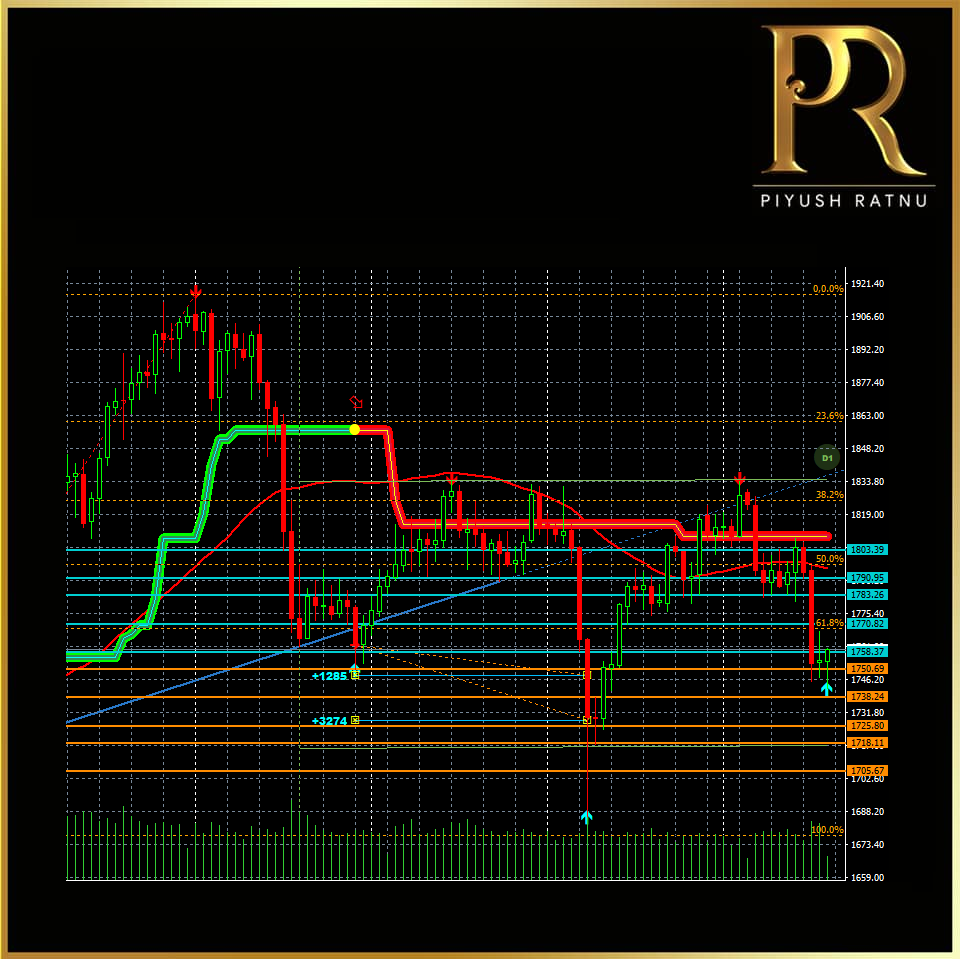
After AUGUST,
September is the cruelest month, and it's playing out that way once again, with rolling corrections all over the place, something that is, again, typically a precursor to the seasonal decline that begins in just a couple of days.
STAY ALERT.
The Federal Reserve is likely to announce its tapering plans, starting by the end of this year, at its September 21-22 monetary policy meeting. The Bank of England may also hint at tapering, given the rising inflation in the UK. A potential withdrawal in the monetary policy stimulus will continue to bode ill for gold.
A failure to defend the monthly lows of $1742, a fresh leg down could initiate towards the $1700 psychological magnate. Alternatively, the pattern support now resistance at $1753 could challenge gold’s road to recovery.
After Thursday’s $50 slide, gold price looked to stabilize on Friday, although held on to multi-week lows near $1750. Sellers took a breather after the previous decline, which was mainly seen as a chart-based sell-off after gold price failed to resist above the $1800 barrier. The slide also ensued after the US Retail Sales surprised to the upside in August, showing signs of strengthening economy and reinforced Fed’s tapering bets. On Friday, gold price attempted a bounce but lacked conviction amid a broadly firmer US dollar. The troubled Chinese property developer giant Evergrande’s potential default story dented the investors’ sentiment and lifted the dollar’s safe-haven appeal while rising Treasury yields on tapering bets also aided the greenback, limiting gold’s upside attempts.
Heading into a big week, with the Bank of England and the Fed central bank meetings in focus, gold price resumes last week’s downtrend and refreshes monthly lows near $1740 amid Fed’s tapering speculations and as risks surrounding Evergrande build up. The US dollar index holds at monthly tops, as the Fed is likely to announce its tapering plans, starting by the end of this year, at its September 21-22 monetary policy meeting. The BOE may also hint at tapering, given the rising inflation in the UK. A potential withdrawal in the monetary policy stimulus will continue to bode ill for gold price. Later in the day, the dynamics in the US dollar and the broader market sentiment will continue to have a significant bearing on gold trades, as the economic calendar appears scarce.
As observed on the four-hour chart, gold price has confirmed a bear pennant pattern, considering the recent consolidation that followed the previous week’s slide.
Gold price closed the four-hourly candlestick below the rising trendline support at $1752, charting out the bearish continuation formation.
The death cross validated on the same time frame on Friday, adds credence to the potential downside.
The Relative Strength Index (RSI) is holding in the oversold territory, suggesting a bounce could be in the offing. However, given the bearish technical setup, any recovery attempt could be seen as a good selling opportunity.
A failure to defend the monthly lows of $1742, a fresh leg down could initiate towards the $1700 psychological magnate.
Alternatively, the pattern support now resistance at $1753 could challenge gold’s road to recovery.
Further up, the pattern resistance at $1759 could be the next relevant upside target. A sustained move above the latter could expose the bearish 21-Simple Moving Average (SMA) at $1771 (1777 zone).
All in all, the path of least resistance for the gold price appears to the downside.
The question remains the same:
CRASHING GOLD: A Buying Opportunity or One should wait till this Year's NEW low?
September is the cruelest month, and it's playing out that way once again, with rolling corrections all over the place, something that is, again, typically a precursor to the seasonal decline that begins in just a couple of days.
STAY ALERT.
The Federal Reserve is likely to announce its tapering plans, starting by the end of this year, at its September 21-22 monetary policy meeting. The Bank of England may also hint at tapering, given the rising inflation in the UK. A potential withdrawal in the monetary policy stimulus will continue to bode ill for gold.
A failure to defend the monthly lows of $1742, a fresh leg down could initiate towards the $1700 psychological magnate. Alternatively, the pattern support now resistance at $1753 could challenge gold’s road to recovery.
After Thursday’s $50 slide, gold price looked to stabilize on Friday, although held on to multi-week lows near $1750. Sellers took a breather after the previous decline, which was mainly seen as a chart-based sell-off after gold price failed to resist above the $1800 barrier. The slide also ensued after the US Retail Sales surprised to the upside in August, showing signs of strengthening economy and reinforced Fed’s tapering bets. On Friday, gold price attempted a bounce but lacked conviction amid a broadly firmer US dollar. The troubled Chinese property developer giant Evergrande’s potential default story dented the investors’ sentiment and lifted the dollar’s safe-haven appeal while rising Treasury yields on tapering bets also aided the greenback, limiting gold’s upside attempts.
Heading into a big week, with the Bank of England and the Fed central bank meetings in focus, gold price resumes last week’s downtrend and refreshes monthly lows near $1740 amid Fed’s tapering speculations and as risks surrounding Evergrande build up. The US dollar index holds at monthly tops, as the Fed is likely to announce its tapering plans, starting by the end of this year, at its September 21-22 monetary policy meeting. The BOE may also hint at tapering, given the rising inflation in the UK. A potential withdrawal in the monetary policy stimulus will continue to bode ill for gold price. Later in the day, the dynamics in the US dollar and the broader market sentiment will continue to have a significant bearing on gold trades, as the economic calendar appears scarce.
As observed on the four-hour chart, gold price has confirmed a bear pennant pattern, considering the recent consolidation that followed the previous week’s slide.
Gold price closed the four-hourly candlestick below the rising trendline support at $1752, charting out the bearish continuation formation.
The death cross validated on the same time frame on Friday, adds credence to the potential downside.
The Relative Strength Index (RSI) is holding in the oversold territory, suggesting a bounce could be in the offing. However, given the bearish technical setup, any recovery attempt could be seen as a good selling opportunity.
A failure to defend the monthly lows of $1742, a fresh leg down could initiate towards the $1700 psychological magnate.
Alternatively, the pattern support now resistance at $1753 could challenge gold’s road to recovery.
Further up, the pattern resistance at $1759 could be the next relevant upside target. A sustained move above the latter could expose the bearish 21-Simple Moving Average (SMA) at $1771 (1777 zone).
All in all, the path of least resistance for the gold price appears to the downside.
The question remains the same:
CRASHING GOLD: A Buying Opportunity or One should wait till this Year's NEW low?

Piyush Lalsingh Ratnu

Evergrande collapse could have a ‘domino effect’ on China’s property sector
A spillover of the crisis at China Evergrande Group into other parts of the economy could become a systemic problem, a sizable number of developers in the offshore dollar market appear to be “highly distressed” and may not survive much longer if the refinancing channel remains shut for a prolonged period.
China’s “highly distressed” real estate companies are at risk of collapse as the country’s highly indebted developer Evergrande is on the brink of default. Evergrande, the world’s most indebted property developer, is crumbling under the weight of more than $300 billion of debt and warned more than once it could default. Banks have reportedly declined to extend new loans to buyers of uncompleted Evergrande residential projects, while ratings agencies have repeatedly downgraded the firm, citing its liquidity crunch.
The financial position of the other Chinese property developers also took a hit following rules outlined by the Chinese government to rein in borrowing costs of the real estate firms. The measures included placing a cap on debt in relation to a company’s cash flows, assets and capital levels.
Evergrande bosses face ‘severe punishment’ after securing early redemptions
Six senior Evergrande executives face “severe punishment” for securing early redemptions on investment products that the indebted Chinese property group subsequently told retail investors it could not repay on time, the company has said.
The admission comes ahead of a critical fortnight for the developer, which is struggling to repay investors, banks and bondholders, as well as complete flats for homebuyers who paid for their new properties in advance.
Hong Kong-listed shares in Evergrande fell as much as 18.9 per cent on Monday, while broader concerns about the health of China’s real estate sector triggered a wider sell-off.
Last week hundreds of retail investors protested at Evergrande’s headquarters in the southern city of Shenzhen, after executives said they needed more time to pay the interest and principal on high-yielding wealth management products issued by the group. They were joined by suppliers who said they had also not been paid.
Du Liang, a senior company executive, told investors that Evergrande had used at least Rmb40bn ($6.2bn) from wealth management sales to fund construction projects across the country, according to people who participated in settlement negotiations. In addition to the money Evergrande has borrowed from 80,000 retail investors, the group owes other creditors and suppliers an estimated $300bn.
In a statement at the weekend, Evergrande said that as of May 1 more than 40 group executives had purchased its investment products. Six of them, who had secured early redemptions of their investments, will return the money.
“All funds redeemed by the managers must be returned and severe penalties will be imposed,” said the company, which has also offered to repay investors with discounted flats and parking lots.
It is common for the owners and employees of heavily indebted Chinese companies to buy such products to help fund operations. Ding Yumei, wife of Evergrande founder and chair Hui Ka Yan, paid Rmb20m for group investment products in July.
Evergrande’s attempts to calm investor anger highlight the many challenges its debt crisis poses for the Chinese government, which is reluctant to bail out the company even though its collapse could have wide-ranging consequences.
Some Evergrande bonds have recently traded as low as 20 cents on the dollar, while yields on other Chinese property groups’ debt have risen sharply.
The value of Evergrande’s Hong Kong-traded shares have fallen almost 90 per cent over the past year.
The Chinese government recently organised a bailout of Huarong, a heavily indebted state-owned asset manager, by other government-controlled asset managers and banks. But it is reluctant to do the same for a large private-sector company such as Evergrande.
IMPACT: STRONGER DOLLAR. Volatility in GOLD | Panic based SELLING in Equities
A spillover of the crisis at China Evergrande Group into other parts of the economy could become a systemic problem, a sizable number of developers in the offshore dollar market appear to be “highly distressed” and may not survive much longer if the refinancing channel remains shut for a prolonged period.
China’s “highly distressed” real estate companies are at risk of collapse as the country’s highly indebted developer Evergrande is on the brink of default. Evergrande, the world’s most indebted property developer, is crumbling under the weight of more than $300 billion of debt and warned more than once it could default. Banks have reportedly declined to extend new loans to buyers of uncompleted Evergrande residential projects, while ratings agencies have repeatedly downgraded the firm, citing its liquidity crunch.
The financial position of the other Chinese property developers also took a hit following rules outlined by the Chinese government to rein in borrowing costs of the real estate firms. The measures included placing a cap on debt in relation to a company’s cash flows, assets and capital levels.
Evergrande bosses face ‘severe punishment’ after securing early redemptions
Six senior Evergrande executives face “severe punishment” for securing early redemptions on investment products that the indebted Chinese property group subsequently told retail investors it could not repay on time, the company has said.
The admission comes ahead of a critical fortnight for the developer, which is struggling to repay investors, banks and bondholders, as well as complete flats for homebuyers who paid for their new properties in advance.
Hong Kong-listed shares in Evergrande fell as much as 18.9 per cent on Monday, while broader concerns about the health of China’s real estate sector triggered a wider sell-off.
Last week hundreds of retail investors protested at Evergrande’s headquarters in the southern city of Shenzhen, after executives said they needed more time to pay the interest and principal on high-yielding wealth management products issued by the group. They were joined by suppliers who said they had also not been paid.
Du Liang, a senior company executive, told investors that Evergrande had used at least Rmb40bn ($6.2bn) from wealth management sales to fund construction projects across the country, according to people who participated in settlement negotiations. In addition to the money Evergrande has borrowed from 80,000 retail investors, the group owes other creditors and suppliers an estimated $300bn.
In a statement at the weekend, Evergrande said that as of May 1 more than 40 group executives had purchased its investment products. Six of them, who had secured early redemptions of their investments, will return the money.
“All funds redeemed by the managers must be returned and severe penalties will be imposed,” said the company, which has also offered to repay investors with discounted flats and parking lots.
It is common for the owners and employees of heavily indebted Chinese companies to buy such products to help fund operations. Ding Yumei, wife of Evergrande founder and chair Hui Ka Yan, paid Rmb20m for group investment products in July.
Evergrande’s attempts to calm investor anger highlight the many challenges its debt crisis poses for the Chinese government, which is reluctant to bail out the company even though its collapse could have wide-ranging consequences.
Some Evergrande bonds have recently traded as low as 20 cents on the dollar, while yields on other Chinese property groups’ debt have risen sharply.
The value of Evergrande’s Hong Kong-traded shares have fallen almost 90 per cent over the past year.
The Chinese government recently organised a bailout of Huarong, a heavily indebted state-owned asset manager, by other government-controlled asset managers and banks. But it is reluctant to do the same for a large private-sector company such as Evergrande.
IMPACT: STRONGER DOLLAR. Volatility in GOLD | Panic based SELLING in Equities

Piyush Lalsingh Ratnu
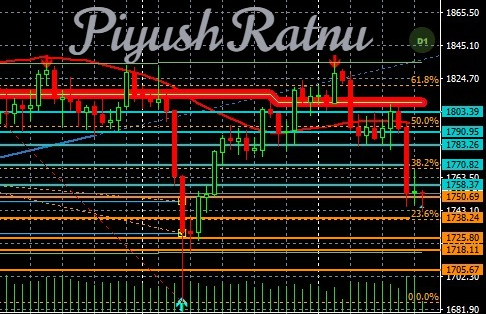
*CRASHING GOLD: A Buying Opportunity or One should wait till this Year's NEW low?*
So much money printed. Excessive debt. Even pandemic! And gold failed to hold gains. But that’s how markets work, no matter what gold permabulls say. Lots of money has been already printed, and the world has been suffering from the pandemic for well over a year. Gold should be soaring in this environment! Silver should be soaring! Gold stocks should be soaring too!
This is what happened in the previous 3 cases after the retail sales report:
• gold declined after retail sales disappointed in June
• gold topped after retail sales outperformed in July
• gold paused its rally after retail sales disappointed in August
• gold declined after retail sales outperformed in September
Gold failed to hold its gains above its 2011 highs. Can you imagine that? So much money printed. Excessive debts. Even pandemic! And gold still failed to hold gains above its 2011 highs. If this doesn’t make you question the validity of the bullish narrative in the medium term in the precious metals sector, consider this:
Silver – with an even better fundamental situation than gold – wasn’t even close to its 2011 highs (~50). The closest it got to this level was a brief rally above $30. And now, after even more money was printed, silver is in its low 20s.
And gold stocks? Gold stocks are not above their 2011 highs, they were not even close. They were not above their 2008 highs either. In fact, the HUI Index – the flagship proxy for gold stocks – is trading below its 2003 high! And that’s in nominal prices. In real prices, it’s even lower. Just imagine how weak the precious metals sector is if the part of the sector that is supposed to rally first (that’s what we usually see at the beginning of major rallies) is underperforming in such a ridiculous manner. And that’s just the beginning of the decline in the mining stocks.
*More to Come!*
*Stay Alert | Do not pile up positions. Maintain price gap, implement intraday trades. Exit trades in net profit, do not hold trades. A Major market correction $100-130 expected before 10 October, 2021 or between 09-19 November, 2021.*
Disclaimer: Please note that the aim of the above analysis is to discuss the likely long-term impact of the featured phenomenon on the price of gold and this analysis does not indicate (nor does it aim to do so) whether gold is likely to move higher or lower in the short- or medium term. In order to determine the latter, many additional factors need to be considered (i.e. sentiment, chart patterns, cycles, indicators, ratios, self-similar patterns and more) and we are taking them into account (and discussing the short- and medium-term outlook) in our analysis. Invest only as much as you can afford to recover in case of losses.
So much money printed. Excessive debt. Even pandemic! And gold failed to hold gains. But that’s how markets work, no matter what gold permabulls say. Lots of money has been already printed, and the world has been suffering from the pandemic for well over a year. Gold should be soaring in this environment! Silver should be soaring! Gold stocks should be soaring too!
This is what happened in the previous 3 cases after the retail sales report:
• gold declined after retail sales disappointed in June
• gold topped after retail sales outperformed in July
• gold paused its rally after retail sales disappointed in August
• gold declined after retail sales outperformed in September
Gold failed to hold its gains above its 2011 highs. Can you imagine that? So much money printed. Excessive debts. Even pandemic! And gold still failed to hold gains above its 2011 highs. If this doesn’t make you question the validity of the bullish narrative in the medium term in the precious metals sector, consider this:
Silver – with an even better fundamental situation than gold – wasn’t even close to its 2011 highs (~50). The closest it got to this level was a brief rally above $30. And now, after even more money was printed, silver is in its low 20s.
And gold stocks? Gold stocks are not above their 2011 highs, they were not even close. They were not above their 2008 highs either. In fact, the HUI Index – the flagship proxy for gold stocks – is trading below its 2003 high! And that’s in nominal prices. In real prices, it’s even lower. Just imagine how weak the precious metals sector is if the part of the sector that is supposed to rally first (that’s what we usually see at the beginning of major rallies) is underperforming in such a ridiculous manner. And that’s just the beginning of the decline in the mining stocks.
*More to Come!*
*Stay Alert | Do not pile up positions. Maintain price gap, implement intraday trades. Exit trades in net profit, do not hold trades. A Major market correction $100-130 expected before 10 October, 2021 or between 09-19 November, 2021.*
Disclaimer: Please note that the aim of the above analysis is to discuss the likely long-term impact of the featured phenomenon on the price of gold and this analysis does not indicate (nor does it aim to do so) whether gold is likely to move higher or lower in the short- or medium term. In order to determine the latter, many additional factors need to be considered (i.e. sentiment, chart patterns, cycles, indicators, ratios, self-similar patterns and more) and we are taking them into account (and discussing the short- and medium-term outlook) in our analysis. Invest only as much as you can afford to recover in case of losses.

Piyush Lalsingh Ratnu
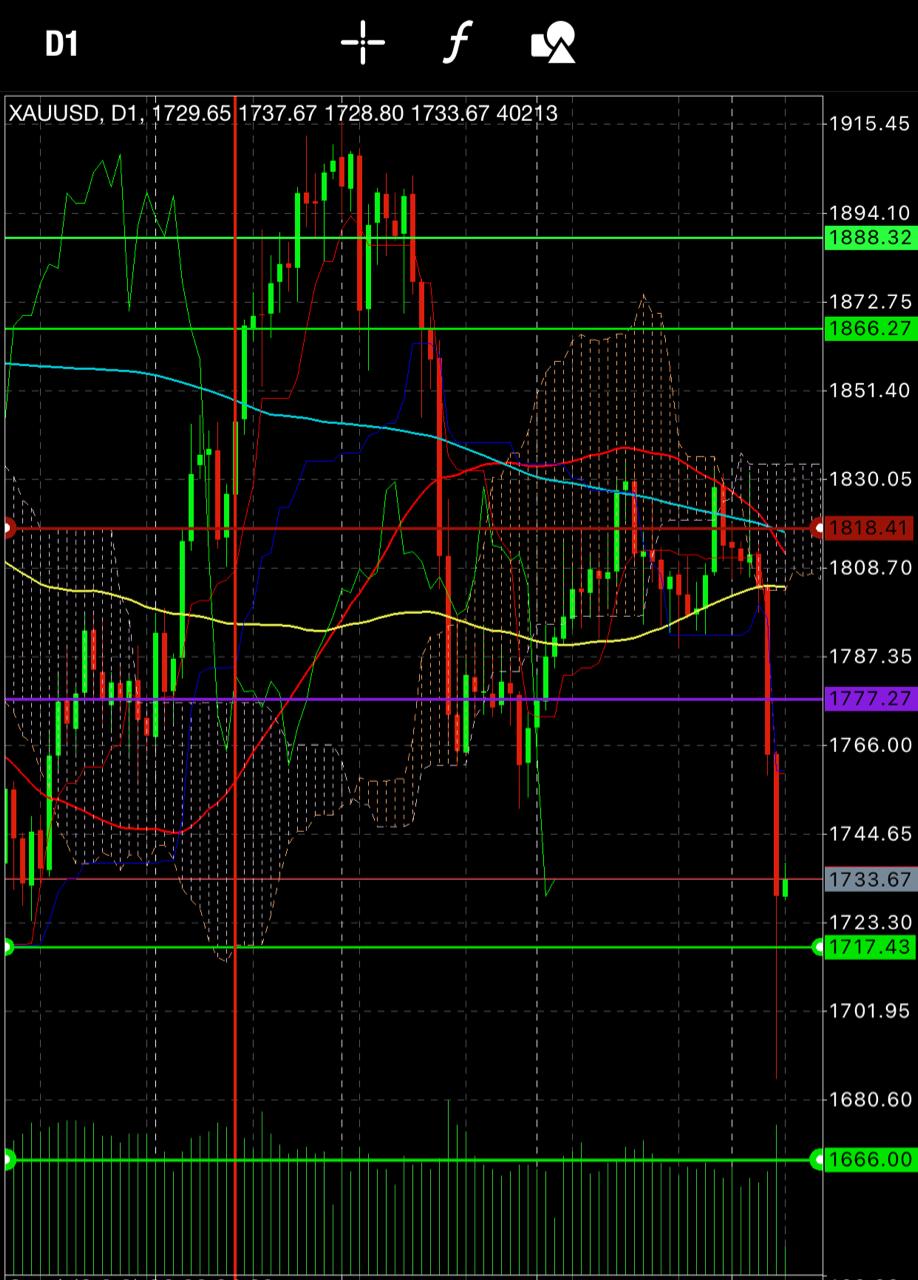
1818 sell zone
1717 buy zone
As indicated repeatedly since 12 Aug 2020.
Gold re created history by crashing on 09.08.2021, last year Gold crashed $150+ on 08.08.2020.
Market cycles play a crucial role in price movements in addition to fundamentals and technicals.
Fundamentals make technicals, technicals never make fundamentals, however by observing technicals you can trace the possibility of a planted fundamental to prove or justify the so called market correction or price consolidation. In such cases price range play a major role for a trader to enter in right direction at right price range and right time.
2020
1966
1947
1926
1907
1888
1866
1818
1777
1717
1666(1685 year low)
The above numbers were highlighted by me since 12 Aug 2020, these numbers are acting as tough resistance and support levels, and the same was proved once again on 09.08.2021 when Gold was in crash mode since ADP data published on 04.08.2021: 1832.
The price crash was observed from 1832 to 1684 (on some
Platforms lowest price was observed as 1650/1630 price zone), some brokers tried to capitalise the crash to achieve higher revenue in B Booking and stop loss hunting.
I feel 70% of accounts were not ready to hold the losses at a price range of 1680, because general and generic sentiment on NFP is a price movement or $15/20, at 1810 traders expected a crash till 1790/1785 zone. However on NFP data Gold crashed till 1757 zone in four hours on Friday, and on Monday Gold crashed more 80 dollars and proved once again that Gold is the King of volatility by achieving this year’s low 1685 and recovering back 50% in next 12 hours.
Concluding the data:
Those who trade Gold, always be ready for a price movement of 5000/10000/25000 pips in a week, only then you can survive such market cycles based price movements and crashes.
Always believe in safeguarding your principle rather than risking the same to make some temporary profits.
We will resume trading from 18 Aug 2021 as announced earlier too.
As alerted at 16.08 hours
Before NFP
I suggested BUY entries from 1777, price gap of 15 and further gap of 5.3.2 dollars.
1762 was the ultimate target of Gold crossed 1790, and the low for Friday was 1757.
We entered from 1781 with price gaps in RM and GR and closed all trades in net average at 1763.90 after gold recovered from 1757 zone till 1766.
On NFP day
After NFP data
At 20.35 hours
I alerted in advance the next price target can be 1736/1717/1666
Reason:
Senate meeting
Infra Bill optimism
Stimulus spending
Monetary policy discussion
Tapering optimism
Dollar strength
COVID fears
Strong NFP data
Interest rate related discussion
Rising yields
Rising stocks and indices
On Monday 09.08.2021
Gold opened at 1757 and crashed till 1684 price in three hours, and recovered back till 1728 price zone.
Yes Gold crashed only till 1685
However a rally below 1666 would have opened the gates to 1600 and 1555 price levels.
So, keeping safety first, we entered SR 1717 and made an exit at 1723/1726 SR zone.
Accuracy proven once again.
Those who believe in my analysis, am sure made handsome profits.
And those who chose not to keep price gaps, am sure lost their entire principle.
Money Management
Risk Management
Is the key to success in Trading.
0.01 is my first step
Always!
Wish you luck,
See you all next week on the new set of trading.
Will be trading more from 18 Aug 2021 as I believe more market correction till 18 Aug, followed by Jackson Hole meeting.
Another movement of $45/80 is expected.
Stay Alert!
1717 buy zone
As indicated repeatedly since 12 Aug 2020.
Gold re created history by crashing on 09.08.2021, last year Gold crashed $150+ on 08.08.2020.
Market cycles play a crucial role in price movements in addition to fundamentals and technicals.
Fundamentals make technicals, technicals never make fundamentals, however by observing technicals you can trace the possibility of a planted fundamental to prove or justify the so called market correction or price consolidation. In such cases price range play a major role for a trader to enter in right direction at right price range and right time.
2020
1966
1947
1926
1907
1888
1866
1818
1777
1717
1666(1685 year low)
The above numbers were highlighted by me since 12 Aug 2020, these numbers are acting as tough resistance and support levels, and the same was proved once again on 09.08.2021 when Gold was in crash mode since ADP data published on 04.08.2021: 1832.
The price crash was observed from 1832 to 1684 (on some
Platforms lowest price was observed as 1650/1630 price zone), some brokers tried to capitalise the crash to achieve higher revenue in B Booking and stop loss hunting.
I feel 70% of accounts were not ready to hold the losses at a price range of 1680, because general and generic sentiment on NFP is a price movement or $15/20, at 1810 traders expected a crash till 1790/1785 zone. However on NFP data Gold crashed till 1757 zone in four hours on Friday, and on Monday Gold crashed more 80 dollars and proved once again that Gold is the King of volatility by achieving this year’s low 1685 and recovering back 50% in next 12 hours.
Concluding the data:
Those who trade Gold, always be ready for a price movement of 5000/10000/25000 pips in a week, only then you can survive such market cycles based price movements and crashes.
Always believe in safeguarding your principle rather than risking the same to make some temporary profits.
We will resume trading from 18 Aug 2021 as announced earlier too.
As alerted at 16.08 hours
Before NFP
I suggested BUY entries from 1777, price gap of 15 and further gap of 5.3.2 dollars.
1762 was the ultimate target of Gold crossed 1790, and the low for Friday was 1757.
We entered from 1781 with price gaps in RM and GR and closed all trades in net average at 1763.90 after gold recovered from 1757 zone till 1766.
On NFP day
After NFP data
At 20.35 hours
I alerted in advance the next price target can be 1736/1717/1666
Reason:
Senate meeting
Infra Bill optimism
Stimulus spending
Monetary policy discussion
Tapering optimism
Dollar strength
COVID fears
Strong NFP data
Interest rate related discussion
Rising yields
Rising stocks and indices
On Monday 09.08.2021
Gold opened at 1757 and crashed till 1684 price in three hours, and recovered back till 1728 price zone.
Yes Gold crashed only till 1685
However a rally below 1666 would have opened the gates to 1600 and 1555 price levels.
So, keeping safety first, we entered SR 1717 and made an exit at 1723/1726 SR zone.
Accuracy proven once again.
Those who believe in my analysis, am sure made handsome profits.
And those who chose not to keep price gaps, am sure lost their entire principle.
Money Management
Risk Management
Is the key to success in Trading.
0.01 is my first step
Always!
Wish you luck,
See you all next week on the new set of trading.
Will be trading more from 18 Aug 2021 as I believe more market correction till 18 Aug, followed by Jackson Hole meeting.
Another movement of $45/80 is expected.
Stay Alert!

Piyush Lalsingh Ratnu

Gold Analysis: 28 July, 2021: FED INTEREST RATE DAY.
ECB is unlikely to raise the interest rates until at least 2023
ECB’s dovish shift is bad news for the yellow metal
:: ultra-low interest rates for even longer
:: asset purchases under the Pandemic Emergency Purchase Programme at the current (faster than it was originated) pace over the third quarter of 2021
::No bazookas
*Impact: *
DOLLAR appreciated relative to the euro after the ECB’s monetary policy meeting.
Result: GOLD crashed.
Current price zone: 1796-1818
The Fed looks hawkish in comparison to the ECB
*FOCUS: *
:: tapering and monetary policy, and it’s normalization
:: the timing of tapering amid surging inflation in the US
:: the divergence in monetary policy and interest rates
:: the Fed is expected to hint at a likely taper starting off from the final quarter of this year.
OIL Co-relation:
Oil prices continue to recoup previous losses as traders bet on tightening supply. It’s swift recovery above 71.10 is an encouraging sign that buyers are still hanging around. Following the breakout, 70.10 has established itself as fresh support.
YIELDS
**On Tuesday, the US dollar has given back more ground as real US bond yields hit all-time lows, supporting the yellow metal.
Todays, The dollar fell, despite a generalized dismal mood. Global stocks edged lower, while demand for government bonds increased, pushing yields lower.
**The yield on 10-year Treasury inflation-protected securities (TIPS) hit an all-time low -1.147% before rebounding to -1.116%.
**Traders are buying DOLLAR (repetition of Last JULY format) due to COVID concerns, soaring cases, restrictions and seriousness of B.1.617.2.
**10-year breakeven inflation rates rose to 2.40% and nominal yields fell to 1.25%. Nominal yields suggest bond markets are getting increasingly concerned about the potential deflationary impact of the delta variant, but inflation break evens suggest greater concern about the current inflation outlook.
**US infrastructure bill added volatility and optimism in market, recently.
**To hedge the potential economic fallout from the spread of the highly contagious Delta variant
**China's regulatory crackdown is impacting equities & stocks
**The risk-off impulse in the markets depicts a generally negative tone around the equity markets, supporting GOLD.
**Surging covid cases in Asia is supporting DOLLAR.
GOLD: Current Status:
Monetary Policy Related Scenarios:
Gold would be expected to gain on a less hawkish and more cautionary tone, pushing the US dollar down of its carry trade advantage over cross currencies.
Tapering could be mentioned in the official statement, which would be a very hawkish surprise and would be expected to support the US dollar. The US dollar smile theory could also come into play given the global spread of the delta variant. If the Fed sounds the alarm bells too aggressively, this will favour the dollar and cap any bullish advances in gold for now.
CONSOLIDATION:
The current consolidation is a sign of indecision ahead of a catalyst-driven breakout. 1823 is a major hurdle and its breach would heighten momentum and resume the stalled rally till 1855-1866 (resistance zone).
SCK:
H1 H4 D1 GOLD is currently in OVERSOLD area
Past 15 days Oscillation: 1790-1818 price zone.
SMA & FIB:
D SMA5 Stands at 1827 (1818-1823 zone) indicating a tough resistance at 1823, suggesting SELLS above 1818 price level till 38.2% with price gap of $5 between each trade set to exit in NET AVERAGE PROFIT in the same set.
SMA SUMMARY
Daily SMA20 1800.64
Daily SMA50 1833.41
Daily SMA100 1797.04
Daily SMA200 1822.82
S/R Levels
LEVELS
Previous Daily High 1811.55
Previous Daily Low 1796.42
Previous Weekly High 1825.04
Previous Weekly Low 1789.8
Previous Monthly High 1916.62
Previous Monthly Low 1750.77
Daily Fibonacci 38.2% 1802.2
Daily Fibonacci 61.8% 1805.77
Daily Pivot Point S1 1792.2
Daily Pivot Point S2 1786.75
Daily Pivot Point S3 1777.07
Daily Pivot Point R1 1807.33
Daily Pivot Point R2 1817.01
Daily Pivot Point R3 1822.46
Summary:
APPLY: RM 5 steps | GP 6 steps | Gaps: $3 after 15 minutes or $25 movement and exit at FIB 23.6 and 38.2% in M5, M15 as, trend based price movement might be observed during Japanese Session followed by consolidation in London Session.
In any case the 30% retracement, will be observed in rise or crash: both the scenarios within 24 hours of price movement, on a longer term FIB RT 50% can be the target price as per H1, to book profits in a time frame of 12-18 trading days.
SELL above 1827: and exit in NAP
1830
1836
1842
BUY below 1777: and exit in NAP.
1770
1765
1760
1755
1750
Do not risk more than 3% of Principle, inorder to recover the trades in case of a high volatility crash or rise. I suggest to take positions at 15 minutes after the interest rate decision and 30 minutes after the conference.
ECB is unlikely to raise the interest rates until at least 2023
ECB’s dovish shift is bad news for the yellow metal
:: ultra-low interest rates for even longer
:: asset purchases under the Pandemic Emergency Purchase Programme at the current (faster than it was originated) pace over the third quarter of 2021
::No bazookas
*Impact: *
DOLLAR appreciated relative to the euro after the ECB’s monetary policy meeting.
Result: GOLD crashed.
Current price zone: 1796-1818
The Fed looks hawkish in comparison to the ECB
*FOCUS: *
:: tapering and monetary policy, and it’s normalization
:: the timing of tapering amid surging inflation in the US
:: the divergence in monetary policy and interest rates
:: the Fed is expected to hint at a likely taper starting off from the final quarter of this year.
OIL Co-relation:
Oil prices continue to recoup previous losses as traders bet on tightening supply. It’s swift recovery above 71.10 is an encouraging sign that buyers are still hanging around. Following the breakout, 70.10 has established itself as fresh support.
YIELDS
**On Tuesday, the US dollar has given back more ground as real US bond yields hit all-time lows, supporting the yellow metal.
Todays, The dollar fell, despite a generalized dismal mood. Global stocks edged lower, while demand for government bonds increased, pushing yields lower.
**The yield on 10-year Treasury inflation-protected securities (TIPS) hit an all-time low -1.147% before rebounding to -1.116%.
**Traders are buying DOLLAR (repetition of Last JULY format) due to COVID concerns, soaring cases, restrictions and seriousness of B.1.617.2.
**10-year breakeven inflation rates rose to 2.40% and nominal yields fell to 1.25%. Nominal yields suggest bond markets are getting increasingly concerned about the potential deflationary impact of the delta variant, but inflation break evens suggest greater concern about the current inflation outlook.
**US infrastructure bill added volatility and optimism in market, recently.
**To hedge the potential economic fallout from the spread of the highly contagious Delta variant
**China's regulatory crackdown is impacting equities & stocks
**The risk-off impulse in the markets depicts a generally negative tone around the equity markets, supporting GOLD.
**Surging covid cases in Asia is supporting DOLLAR.
GOLD: Current Status:
Monetary Policy Related Scenarios:
Gold would be expected to gain on a less hawkish and more cautionary tone, pushing the US dollar down of its carry trade advantage over cross currencies.
Tapering could be mentioned in the official statement, which would be a very hawkish surprise and would be expected to support the US dollar. The US dollar smile theory could also come into play given the global spread of the delta variant. If the Fed sounds the alarm bells too aggressively, this will favour the dollar and cap any bullish advances in gold for now.
CONSOLIDATION:
The current consolidation is a sign of indecision ahead of a catalyst-driven breakout. 1823 is a major hurdle and its breach would heighten momentum and resume the stalled rally till 1855-1866 (resistance zone).
SCK:
H1 H4 D1 GOLD is currently in OVERSOLD area
Past 15 days Oscillation: 1790-1818 price zone.
SMA & FIB:
D SMA5 Stands at 1827 (1818-1823 zone) indicating a tough resistance at 1823, suggesting SELLS above 1818 price level till 38.2% with price gap of $5 between each trade set to exit in NET AVERAGE PROFIT in the same set.
SMA SUMMARY
Daily SMA20 1800.64
Daily SMA50 1833.41
Daily SMA100 1797.04
Daily SMA200 1822.82
S/R Levels
LEVELS
Previous Daily High 1811.55
Previous Daily Low 1796.42
Previous Weekly High 1825.04
Previous Weekly Low 1789.8
Previous Monthly High 1916.62
Previous Monthly Low 1750.77
Daily Fibonacci 38.2% 1802.2
Daily Fibonacci 61.8% 1805.77
Daily Pivot Point S1 1792.2
Daily Pivot Point S2 1786.75
Daily Pivot Point S3 1777.07
Daily Pivot Point R1 1807.33
Daily Pivot Point R2 1817.01
Daily Pivot Point R3 1822.46
Summary:
APPLY: RM 5 steps | GP 6 steps | Gaps: $3 after 15 minutes or $25 movement and exit at FIB 23.6 and 38.2% in M5, M15 as, trend based price movement might be observed during Japanese Session followed by consolidation in London Session.
In any case the 30% retracement, will be observed in rise or crash: both the scenarios within 24 hours of price movement, on a longer term FIB RT 50% can be the target price as per H1, to book profits in a time frame of 12-18 trading days.
SELL above 1827: and exit in NAP
1830
1836
1842
BUY below 1777: and exit in NAP.
1770
1765
1760
1755
1750
Do not risk more than 3% of Principle, inorder to recover the trades in case of a high volatility crash or rise. I suggest to take positions at 15 minutes after the interest rate decision and 30 minutes after the conference.

Piyush Lalsingh Ratnu

GOLD: Daily chart setup: Key observations: 1836/1830 ZONE is a tough support, unless there is a catalyst to drive the downwards rally, 1830 zone looks solid support on 16.06.2021 and a point of reversal for 25% retracement after today's movement, before crashing further or reversing to 61.8% FIB level on today's chart. 38.2% at 1827.00 level also makes it a solid support, in addition two support lines can be seen at 1833 - 1827 adding to the solidarity of this price range. A sell signal on Daily chart is still pending which might indicate the further crash till 1818/1777 level subject to fundamentals, tapering, interest rate project, DOT plots, XAUXAG ratio, Yields, DXY, ETF, D-S zone and Inflation concerns.
GOLD: H1 chart setup: Algorithm has already published the crashing level till 1846 and 1839 (1836 zone) yesterday based on different parameters observed in algorithm. Again this indicates, a crash till 1846/1836 level as per our 15/20/30 level price crash and reversal till 30% retracement level after the crash in the first phase. NEXT expected signal on H1 chart is BUY, so we will be BUYING Session and Daily LOWS as indicated yesterday too.
Reverse scenario:
If GOLD rises to price level if 1872 and 1883, I will prefer to enter in retracement from 1880/1888 levels ( that is after a movement of minimum 25$ with price gap of $6 between each trade in GR strategy, this increasing the possibility of net average profit with every step, since 61.8% rests at 1881 price range with resistance at 1883.80 for today.
The rise can be repeated in early Asian session tomorrow early morning, with more 10-15 dollar price rise in GOLD, if the data, statements support GOLD prices for a higher rise.
Concluding:
A crash till 1836/1830 price range or a rise till 1880/1888 price range is expected, in both the cases we will first observe the movement and pattern, after the price rnage is achieved by GOLD we will enter in retracement keeping in mind 23.6 and 38.2% / 61.8% levels on M15 and H1 charts.
In addition, SMA, trend line, existing FIB Levels, yields, DXY, USDJPY movement, Dollar strength/weakness, XAUXAG ratio - interest rate and monetary policy related statements have to be observed and analysed carefully before taking any big lot, FED and FOMC is not an event to GAMBLE, it is an important event to understand FED's projection and further actions to set the price range and price targets for MAJORS and GOLD in correct co relation and retracement levels.
US Stocks will be range bound today due to Economic event today.
In price range based markets sudden rally followed by dead zones is very common resulting in frustration and multiplication of trades in a hope of exit in net average usually resulting in let loss.
Hence, trade wisely.
It is suggested to trade after watching NYSE opening, price range before and after opening followed by pattern formed before FED and FOMC.
I had suggested a V pattern and hence I will observing the crash first to enter in BUY: Retracement direction.
If I feel I am wrong and Gold rises first then I will wait to find out the reason behind it and then take entry based on the price range achieved before FOMC.
GOLD: H1 chart setup: Algorithm has already published the crashing level till 1846 and 1839 (1836 zone) yesterday based on different parameters observed in algorithm. Again this indicates, a crash till 1846/1836 level as per our 15/20/30 level price crash and reversal till 30% retracement level after the crash in the first phase. NEXT expected signal on H1 chart is BUY, so we will be BUYING Session and Daily LOWS as indicated yesterday too.
Reverse scenario:
If GOLD rises to price level if 1872 and 1883, I will prefer to enter in retracement from 1880/1888 levels ( that is after a movement of minimum 25$ with price gap of $6 between each trade in GR strategy, this increasing the possibility of net average profit with every step, since 61.8% rests at 1881 price range with resistance at 1883.80 for today.
The rise can be repeated in early Asian session tomorrow early morning, with more 10-15 dollar price rise in GOLD, if the data, statements support GOLD prices for a higher rise.
Concluding:
A crash till 1836/1830 price range or a rise till 1880/1888 price range is expected, in both the cases we will first observe the movement and pattern, after the price rnage is achieved by GOLD we will enter in retracement keeping in mind 23.6 and 38.2% / 61.8% levels on M15 and H1 charts.
In addition, SMA, trend line, existing FIB Levels, yields, DXY, USDJPY movement, Dollar strength/weakness, XAUXAG ratio - interest rate and monetary policy related statements have to be observed and analysed carefully before taking any big lot, FED and FOMC is not an event to GAMBLE, it is an important event to understand FED's projection and further actions to set the price range and price targets for MAJORS and GOLD in correct co relation and retracement levels.
US Stocks will be range bound today due to Economic event today.
In price range based markets sudden rally followed by dead zones is very common resulting in frustration and multiplication of trades in a hope of exit in net average usually resulting in let loss.
Hence, trade wisely.
It is suggested to trade after watching NYSE opening, price range before and after opening followed by pattern formed before FED and FOMC.
I had suggested a V pattern and hence I will observing the crash first to enter in BUY: Retracement direction.
If I feel I am wrong and Gold rises first then I will wait to find out the reason behind it and then take entry based on the price range achieved before FOMC.

Piyush Lalsingh Ratnu

· Fed likely to steer clear of any discussion about exiting cheap money
· But it might pencil in a rate hike for 2023, lifting the dollar a little
· Gold was seen oscillating in a narrow trading band through the first half of the European session.
· Expectations for less dovish Fed – amid rising inflationary pressure – so far, has capped the upside.
· A subdued USD demand, a downtick in the US bond yields, softer risk tone extended some support.
The US economic engine is firing on most cylinders, with inflation running hot and consumption far beyond pre-pandemic levels, but the problem child is the labor market. It's still some 7 million jobs away from its pre-crisis glory, adding credence to the view that this inflation shock will fade and making the Fed hesitant to take its foot off the money accelerator.
All this implies the Fed is unlikely to begin a discussion about exiting asset purchases at this meeting. Chairman Powell might indicate this conversation is moving closer but hasn't started yet, preparing the market for a proper shift in the autumn. Beyond that, investors will focus on the new dot plot, where the first rate hike might be brought forward to 2023 as the economy has exceeded expectations.
That would normally argue for a stronger dollar, but any reaction may be minor as markets have already priced in two rate hikes for 2023, meaning this wouldn't be a shocker. Overall, there's no reason for the Fed to rock the boat right now. Inflation expectations and yields are stable or declining, and markets expect taper talks to begin in late August – so why mess with that? Any real dollar strength might have to wait until then.
Gold lacked any firm directional bias and remained confined in a narrow trading band through the first half of the European session on Wednesday. Investors now seemed reluctant to place any aggressive bets, rather preferred to wait on the side lines ahead of the highly-anticipated FOMC monetary policy decision. Investors might have started pricing in the prospects for an earlier stimulus withdrawal amid worries about rising inflationary pressure. This, in turn, was seen as a key factor that capped the upside for the non-yielding yellow metal.
That said, a combination of factors acted as a tailwind for gold and helped limit any losses, at least for the time being. Nervousness ahead of the key event risk was evident from a modest pullback in the equity markets. The prevalent cautious mood was seen as a key factor that extended some support to traditional safe-haven assets, including gold. Adding to this, a subdued US dollar demand – amid a modest downtick in the US Treasury bond yields – further held traders from placing fresh bearish bets around the dollar-denominated commodity. Gold’s next directional move remains in the hands of Fed Chair Jerome Powell and his outlook on the economy, which will influence the American central bank’s next policy action. Patchy US labor market recovery could likely challenge Fed’s tapering expectations.
Gold prices extended the leg lower on 15 June, 2021. The downtick, however, was accompanied by declining open interest and volume, indicative that further retracements are not favoured and opening the door at the same time to a potential rebound in the very near term.
A sustained break below the rising trendline support at $1854 will validate the downside breakout, opening floors the 200-Daily Moving Average (DMA) at $1840. Next on the sellers’ radars will be the May 14 low of $1820.
Acceptance above the falling trendline resistance at $1866 will invalidate the bearish formation.
If the FOMC disappoints the hawks, gold price could rebound towards the previous daily support now resistance at $1879. Ahead of that barrier, the $1870 static resistance and bearish 21-Simple Moving Average (SMA) on the four-hour chart could challenge the bullish commitments.
SUMMARY: 1836 or 1880 zone TODAY.
· But it might pencil in a rate hike for 2023, lifting the dollar a little
· Gold was seen oscillating in a narrow trading band through the first half of the European session.
· Expectations for less dovish Fed – amid rising inflationary pressure – so far, has capped the upside.
· A subdued USD demand, a downtick in the US bond yields, softer risk tone extended some support.
The US economic engine is firing on most cylinders, with inflation running hot and consumption far beyond pre-pandemic levels, but the problem child is the labor market. It's still some 7 million jobs away from its pre-crisis glory, adding credence to the view that this inflation shock will fade and making the Fed hesitant to take its foot off the money accelerator.
All this implies the Fed is unlikely to begin a discussion about exiting asset purchases at this meeting. Chairman Powell might indicate this conversation is moving closer but hasn't started yet, preparing the market for a proper shift in the autumn. Beyond that, investors will focus on the new dot plot, where the first rate hike might be brought forward to 2023 as the economy has exceeded expectations.
That would normally argue for a stronger dollar, but any reaction may be minor as markets have already priced in two rate hikes for 2023, meaning this wouldn't be a shocker. Overall, there's no reason for the Fed to rock the boat right now. Inflation expectations and yields are stable or declining, and markets expect taper talks to begin in late August – so why mess with that? Any real dollar strength might have to wait until then.
Gold lacked any firm directional bias and remained confined in a narrow trading band through the first half of the European session on Wednesday. Investors now seemed reluctant to place any aggressive bets, rather preferred to wait on the side lines ahead of the highly-anticipated FOMC monetary policy decision. Investors might have started pricing in the prospects for an earlier stimulus withdrawal amid worries about rising inflationary pressure. This, in turn, was seen as a key factor that capped the upside for the non-yielding yellow metal.
That said, a combination of factors acted as a tailwind for gold and helped limit any losses, at least for the time being. Nervousness ahead of the key event risk was evident from a modest pullback in the equity markets. The prevalent cautious mood was seen as a key factor that extended some support to traditional safe-haven assets, including gold. Adding to this, a subdued US dollar demand – amid a modest downtick in the US Treasury bond yields – further held traders from placing fresh bearish bets around the dollar-denominated commodity. Gold’s next directional move remains in the hands of Fed Chair Jerome Powell and his outlook on the economy, which will influence the American central bank’s next policy action. Patchy US labor market recovery could likely challenge Fed’s tapering expectations.
Gold prices extended the leg lower on 15 June, 2021. The downtick, however, was accompanied by declining open interest and volume, indicative that further retracements are not favoured and opening the door at the same time to a potential rebound in the very near term.
A sustained break below the rising trendline support at $1854 will validate the downside breakout, opening floors the 200-Daily Moving Average (DMA) at $1840. Next on the sellers’ radars will be the May 14 low of $1820.
Acceptance above the falling trendline resistance at $1866 will invalidate the bearish formation.
If the FOMC disappoints the hawks, gold price could rebound towards the previous daily support now resistance at $1879. Ahead of that barrier, the $1870 static resistance and bearish 21-Simple Moving Average (SMA) on the four-hour chart could challenge the bullish commitments.
SUMMARY: 1836 or 1880 zone TODAY.

Piyush Lalsingh Ratnu
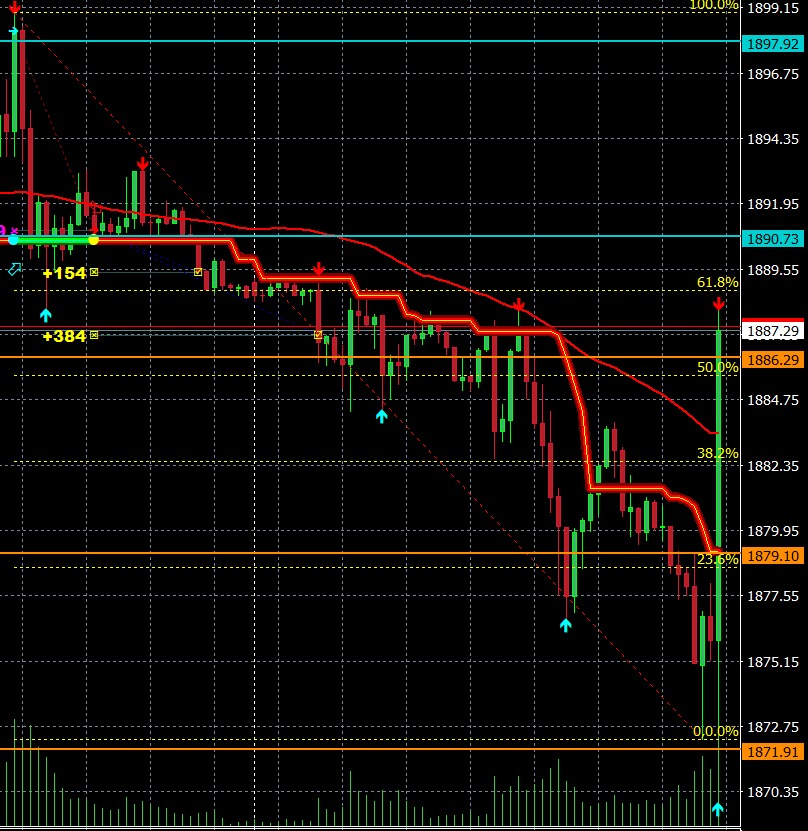
US CPI DATA: Performance of GOLD after + CPI data.
GOLD back to 1888 ONCE AGAIN. EXIT BUY. M15 61.8 | H1 SMA proved RESISTANCE.
US CPI. Strategy: BUY Today’s Lows. Exit at 25% reversal. Resistance: 1890. Support: 1866. Gold rallied from 1869 to 1888 in 10 minutes after + CPI data.
Accuracy proven once again.
#PiyushRatnu #Forex #Bullion #Gold #Analysis
GOLD back to 1888 ONCE AGAIN. EXIT BUY. M15 61.8 | H1 SMA proved RESISTANCE.
US CPI. Strategy: BUY Today’s Lows. Exit at 25% reversal. Resistance: 1890. Support: 1866. Gold rallied from 1869 to 1888 in 10 minutes after + CPI data.
Accuracy proven once again.
#PiyushRatnu #Forex #Bullion #Gold #Analysis

Piyush Lalsingh Ratnu

US CPI DATA in 90 minutes: Possible Impact | TAPERING to guide
If the US CPI print comes in hotter than the consensus of a 0.4% rise in May, it will ramp up the Fed’s tapering expectation, which will render negative for the non-yielding gold. The ECB could also hint towards dialling back of the emergency bond-buying programme.
Sellers could target the immediate support at the horizontal trendline connecting previous lows at $1881. A breach of the latter could trigger a drop towards the June 4 low of $1856. Ahead of that, a demand area around $1865 could offer some reprieve to the bulls.
Any recovery attempt could face stiff resistance around the $1891-$1895 region, where the 21, 50 and 100-simple moving averages (SMA) collide. Further up, the triangle resistance at $1900 will challenge the bullish commitments. The previous month high at $1913 is the level to beat for the optimists.
Forecast from eight banks:
https://www.fxstreet.com/news/us-cpi-preview-forecasts-from-eight-major-banks-for-critical-may-inflation-202106100957
Expected crash: 1866 zone (+/-10) in SS1 1106
Expected rise: 1896/1907 zone
Fib Reversals:
M30 Possibility of heavy resistance at 50% and 61.8%
Resistance
1890-96/1900-1907 zone
H4: Possibility of reversals at 38.2% / 61.8%
Support
1866/1860 - 1836-1827 zone
H1: Possibility of reversals from 23.6% and 0.0% Support
1870/1866/1856 (4 June low)
SMA
M30 SMA
1888
H1SMA
1890
H4 SMA
1893
As per our algorithm:
BUY at DAILY LOWS | Exit in 25% reversal price zone.
M15 M30 H1 BUY Alerts AWAITED.
#PiyushRatnu #Forex #Bullion
If the US CPI print comes in hotter than the consensus of a 0.4% rise in May, it will ramp up the Fed’s tapering expectation, which will render negative for the non-yielding gold. The ECB could also hint towards dialling back of the emergency bond-buying programme.
Sellers could target the immediate support at the horizontal trendline connecting previous lows at $1881. A breach of the latter could trigger a drop towards the June 4 low of $1856. Ahead of that, a demand area around $1865 could offer some reprieve to the bulls.
Any recovery attempt could face stiff resistance around the $1891-$1895 region, where the 21, 50 and 100-simple moving averages (SMA) collide. Further up, the triangle resistance at $1900 will challenge the bullish commitments. The previous month high at $1913 is the level to beat for the optimists.
Forecast from eight banks:
https://www.fxstreet.com/news/us-cpi-preview-forecasts-from-eight-major-banks-for-critical-may-inflation-202106100957
Expected crash: 1866 zone (+/-10) in SS1 1106
Expected rise: 1896/1907 zone
Fib Reversals:
M30 Possibility of heavy resistance at 50% and 61.8%
Resistance
1890-96/1900-1907 zone
H4: Possibility of reversals at 38.2% / 61.8%
Support
1866/1860 - 1836-1827 zone
H1: Possibility of reversals from 23.6% and 0.0% Support
1870/1866/1856 (4 June low)
SMA
M30 SMA
1888
H1SMA
1890
H4 SMA
1893
As per our algorithm:
BUY at DAILY LOWS | Exit in 25% reversal price zone.
M15 M30 H1 BUY Alerts AWAITED.
#PiyushRatnu #Forex #Bullion

Piyush Lalsingh Ratnu
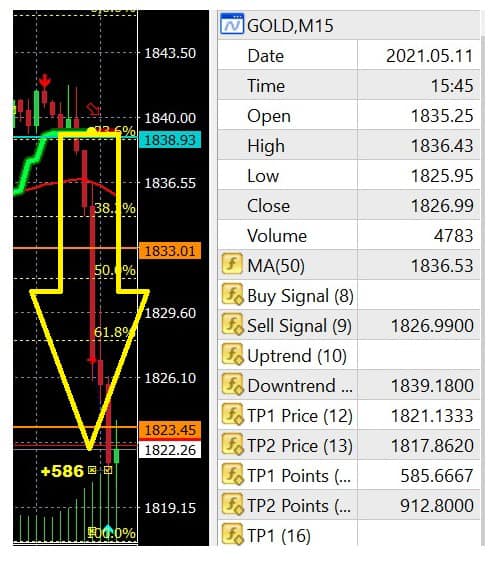
11.05.2021
SPOT GOLD | XAUUSD:
As broadcasted on 07 May 2021 Gold was in sell : market correction zone. Today Gold crashed from 1842/1836 sell zone/resistance zone to 1818.
SELL SIGNAL generated by our algorithm at 15.45 hours on 11.05.2021 | Target Price 1 and 2 achieved successfully.
To receive trading analysis and trading algorithm signals in advance, contact us for more details at info@piyushratnu.com
#PiyushRatnu #Bullion #Gold #Forex #Trading
Team,
Piyush Ratnu
SPOT GOLD | XAUUSD:
As broadcasted on 07 May 2021 Gold was in sell : market correction zone. Today Gold crashed from 1842/1836 sell zone/resistance zone to 1818.
SELL SIGNAL generated by our algorithm at 15.45 hours on 11.05.2021 | Target Price 1 and 2 achieved successfully.
To receive trading analysis and trading algorithm signals in advance, contact us for more details at info@piyushratnu.com
#PiyushRatnu #Bullion #Gold #Forex #Trading
Team,
Piyush Ratnu

Piyush Lalsingh Ratnu
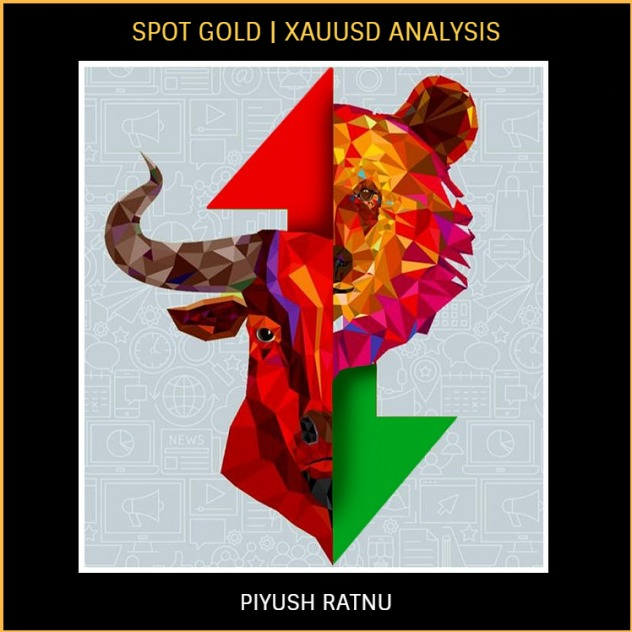
In the aftermath of the Great Recession, the central banks adopted an aggressive monetary policy, slashing interest rates to almost zero and introducing quantitative easing. It has become a new norm since then.
According to the IMF’s Fiscal Monitor Update from January 2021, fiscal deficits amounted to 13.3 percent of GDP, on average, in advanced economies, in 2021, a spike from 3.3 percent seen in 2019. As a consequence, the gross global debt approached 98 percent in 2020 and it’s projected to reach 99.5 percent of the world’s GDP by the end of this year.
First, money flowing into the economy through nonfinancial institutions and people’s accounts may be more inflationary. This is because money doesn’t stay in the financial market where it mainly raises asset prices, but it’s more likely to be spent on consumer goods, boosting the CPI inflation rate. Higher officially reported inflation (and relatively lower asset prices) should support gold, which is seen by investors as an inflation hedge.
Second, the direct cash transfer to the people creates a dangerous precedent. From now, each time the economy falls into crisis, people will demand checks. It means that fiscal responses would have to be increasingly larger to meet the inflated expectations of the public. It also implies that we are approaching a universal basic income, with its mammoth fiscal costs and all related negative economic and social consequences.
Summing up, we live in revolutionary times. The old paradigm that “central banks are the only game in town” has been replaced by the idea that fiscal policy should be more aggressively used. Maintaining balanced budgets is also a dead concept – who would care about deficits when interest rates are so low?
However, assigning a greater role to fiscal policy in achieving macroeconomic goals increases the risk of higher inflation and macroeconomic instability, as politicians tend to be pro-cyclical and reckless. After all, the economic orthodoxy that monetary policy is better suited to achieve macroeconomic stability didn’t come out from nowhere, but from awful experiences of the fiscal follies of the past. I’m not a fan of central bankers, but they are at least less short-sighted than politicians who think mainly about how to win the next election and stay in power.
Hence, the growing acceptance of easy fiscal policy should be positive for gold prices, especially considering that it will be accompanied by an accommodative monetary policy. Such a policy mix should increase the public debt and inflation, which could support gold prices. The caveat is that investors have so far welcomed more stimulus flowing from both the Fed and the Treasury. But this “go big” approach of Powell and Yellen increases the longer-term risk for the economy, which could materialize – similar to the pandemic – sooner than anyone thought.
THIS WILL TRIGGER GOLD +++. Stay CAUTIOUS.
Summary: The growing acceptance of easy fiscal policy should be positive for gold prices.
XAUUSD | Spot GOLD Analysis 27.04.2021 | #PiyushRatnu
According to the IMF’s Fiscal Monitor Update from January 2021, fiscal deficits amounted to 13.3 percent of GDP, on average, in advanced economies, in 2021, a spike from 3.3 percent seen in 2019. As a consequence, the gross global debt approached 98 percent in 2020 and it’s projected to reach 99.5 percent of the world’s GDP by the end of this year.
First, money flowing into the economy through nonfinancial institutions and people’s accounts may be more inflationary. This is because money doesn’t stay in the financial market where it mainly raises asset prices, but it’s more likely to be spent on consumer goods, boosting the CPI inflation rate. Higher officially reported inflation (and relatively lower asset prices) should support gold, which is seen by investors as an inflation hedge.
Second, the direct cash transfer to the people creates a dangerous precedent. From now, each time the economy falls into crisis, people will demand checks. It means that fiscal responses would have to be increasingly larger to meet the inflated expectations of the public. It also implies that we are approaching a universal basic income, with its mammoth fiscal costs and all related negative economic and social consequences.
Summing up, we live in revolutionary times. The old paradigm that “central banks are the only game in town” has been replaced by the idea that fiscal policy should be more aggressively used. Maintaining balanced budgets is also a dead concept – who would care about deficits when interest rates are so low?
However, assigning a greater role to fiscal policy in achieving macroeconomic goals increases the risk of higher inflation and macroeconomic instability, as politicians tend to be pro-cyclical and reckless. After all, the economic orthodoxy that monetary policy is better suited to achieve macroeconomic stability didn’t come out from nowhere, but from awful experiences of the fiscal follies of the past. I’m not a fan of central bankers, but they are at least less short-sighted than politicians who think mainly about how to win the next election and stay in power.
Hence, the growing acceptance of easy fiscal policy should be positive for gold prices, especially considering that it will be accompanied by an accommodative monetary policy. Such a policy mix should increase the public debt and inflation, which could support gold prices. The caveat is that investors have so far welcomed more stimulus flowing from both the Fed and the Treasury. But this “go big” approach of Powell and Yellen increases the longer-term risk for the economy, which could materialize – similar to the pandemic – sooner than anyone thought.
THIS WILL TRIGGER GOLD +++. Stay CAUTIOUS.
Summary: The growing acceptance of easy fiscal policy should be positive for gold prices.
XAUUSD | Spot GOLD Analysis 27.04.2021 | #PiyushRatnu

Piyush Lalsingh Ratnu
Downtrend traced at 1885 on 15 Jan 2021.
|
Alerted by us on 18.01.2021 and 28.01.2021
|
Target price 1800 and 1732 achieved successfully on 01 March, 02 March and 03 March 2021.
|
Total pips encashed: 10,000+
|
To receive trading analysis and trading algorithm signals in advance, contact us for more details.
#PiyushRatnu #Bullion #Gold #Forex #Trading
|
Alerted by us on 18.01.2021 and 28.01.2021
|
Target price 1800 and 1732 achieved successfully on 01 March, 02 March and 03 March 2021.
|
Total pips encashed: 10,000+
|
To receive trading analysis and trading algorithm signals in advance, contact us for more details.
#PiyushRatnu #Bullion #Gold #Forex #Trading
Piyush Lalsingh Ratnu
GOLD: M Scenario based on Yield and Debt
At a 1.1% yield on the 10-year note, the annual servicing payment would amount to roughly $370 billion. Right now, U.S. national debt is approaching $28 trillion, and total debt-to-GDP sits at a stunning 146%.
The U.S. federal budget deficit itself is already at $4.5 trillion or so, after adding the Trump administration’s $3 trillion plus COVID-19 stimulus for last year.
If the 10-year note’s yield rate stands at 2%, coupled with a $30 trillion national debt, annual servicing payments alone would amount to $660 billion roughly.
Annual deficits will continue to make the national debt stack ever higher.
And while the United States appears to be in the relatively early stages of a monetary expansion cycle, money supply could still increase substantially and set the country up for a return to the 2008/2009 financial crisis days.
With the dilution of the fiat monetary system, higher inflation is most certainly on the way. Historically, gold prices have a very strong correlation on a long-term basis with monetary base expansion.
#XAUUSD #GOLD #PiyushRatnu
At a 1.1% yield on the 10-year note, the annual servicing payment would amount to roughly $370 billion. Right now, U.S. national debt is approaching $28 trillion, and total debt-to-GDP sits at a stunning 146%.
The U.S. federal budget deficit itself is already at $4.5 trillion or so, after adding the Trump administration’s $3 trillion plus COVID-19 stimulus for last year.
If the 10-year note’s yield rate stands at 2%, coupled with a $30 trillion national debt, annual servicing payments alone would amount to $660 billion roughly.
Annual deficits will continue to make the national debt stack ever higher.
And while the United States appears to be in the relatively early stages of a monetary expansion cycle, money supply could still increase substantially and set the country up for a return to the 2008/2009 financial crisis days.
With the dilution of the fiat monetary system, higher inflation is most certainly on the way. Historically, gold prices have a very strong correlation on a long-term basis with monetary base expansion.
#XAUUSD #GOLD #PiyushRatnu
:
